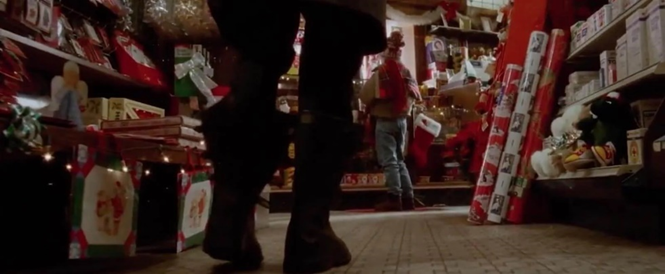Camera angle
The camera shot angle specifies where the camera will be placed to capture a shot. The audience's perception of the scene is influenced by the camera's location in respect to the subjects. To enhance the cinematic impression and emotions, a scene might be shot from many camera perspectives at the same time. A filmmaker has access to a variety of camera perspectives, which may be blended for added impact. Here's an overview of each camera angle, how it works, and why it could be the ideal choice for your next shot list.
1- High angle shot
The camera
in a high angle photograph is pointing down towards your subject. It frequently
allows you to feel inferior to your topic, as if you're "looking down"
on them.
However,
this sort of viewpoint may be expressed in a variety of ways, depending
on the situation.
High Angle
Shot in The Princess Bride
2- Eye-level shot
Consider the
most typical shot, which is at eye level. Your topic is in a neutral
perspective while they're at eye level (not superior or inferior). This is similar
to how we view individuals in real life, with our eye lines intersecting.
Eye Level Shot Example in Forrest Gump
3- Low level shot
From a low
camera shot, gazing up at the subject, a low angle shot frames them. The power
relations between characters are frequently shown in these camera views. From a
low camera shot, gazing up at the subject, a low angle shot frames them. The
power relations between characters are frequently shown in these camera views.
From down
low, a superior character with the upper hand is frequently framed. This gives
the impression that the inferior is looking up to them.
Low
Angle Shot Example in The Empire Strikes Back
4- Hip level shot
A hip level shot is when your camera
is roughly waist-high.
Hip Level Shot Example in Reservoir Dogs
5- Knee level shot
When your camera is roughly as low as
your subject's knees, you're in knee level shot. When used with a low
viewpoint, they might accentuate a character's supremacy.
Knee Level Shot in Home Alone
6- Ground level shot
A ground level shot is one in which
your camera's height is at or near ground level with your subject. Needless to
say, this image portrays what's going on beneath your subject's feet.
Ground Level Shot Example in Star Wars
VIII: The Last Jedi
7- Shoulder level shot
When your camera is nearly the same
height as your subject's shoulders, you've hit the sweet spot. Shoulder level
shots are far more common than eye level shots, which might make your performer
appear shorter than he or she is:
Shoulder Level Shot in
Black Panter
8- Dutch
Angle or Dutch Tilt Shot
The camera is inclined to one side for
a dutch angle (dutch tilt). You may generate a sensation of confusion by
tilting the horizon lines in this fashion.
9- Bird’s Eye View Shot or Overhead Shot
An overhead shot is one that is taken
from a great height, looking down on your subject and a large portion of the
surroundings around him or her. This can help to generate a strong feeling of
size and motion.
Overhead Shot Example in Eternal Sunshine of
the Spotless Mind
10-
Aerial Shot
This is a
shot from a great height, whether from a helicopter or a drone. It creates a
vast amount of scenery. They are used in the opening sequences of one of the
finest cyberpunk films, Blade Runner, to construct futuristic cityscapes.
Aerial Shot Example in Blade Runner
RESSOURCES:
· Wikipedia, the free encyclopedia
· Video, TV & Film Production Management Software | StudioBinder










No comments:
Post a Comment